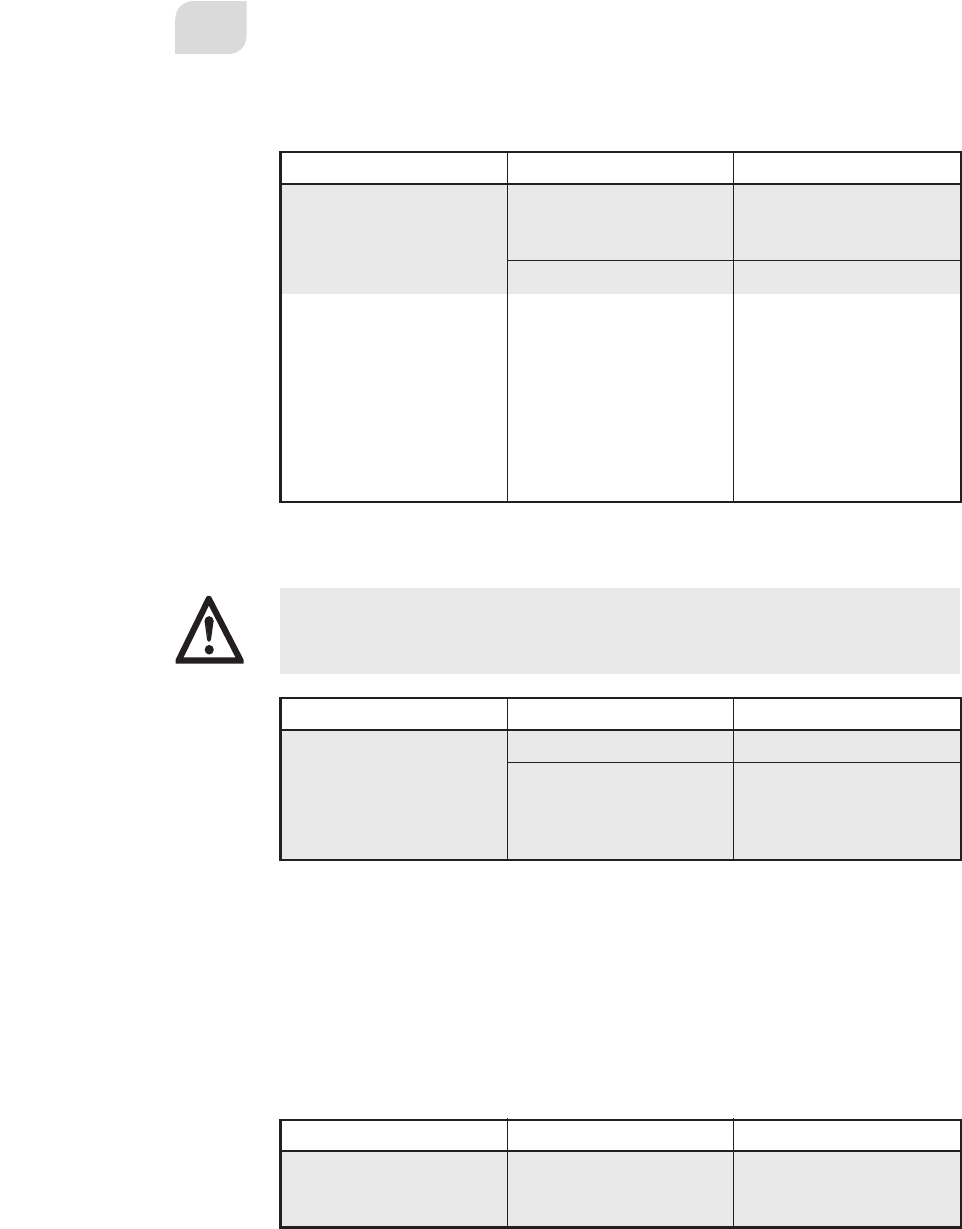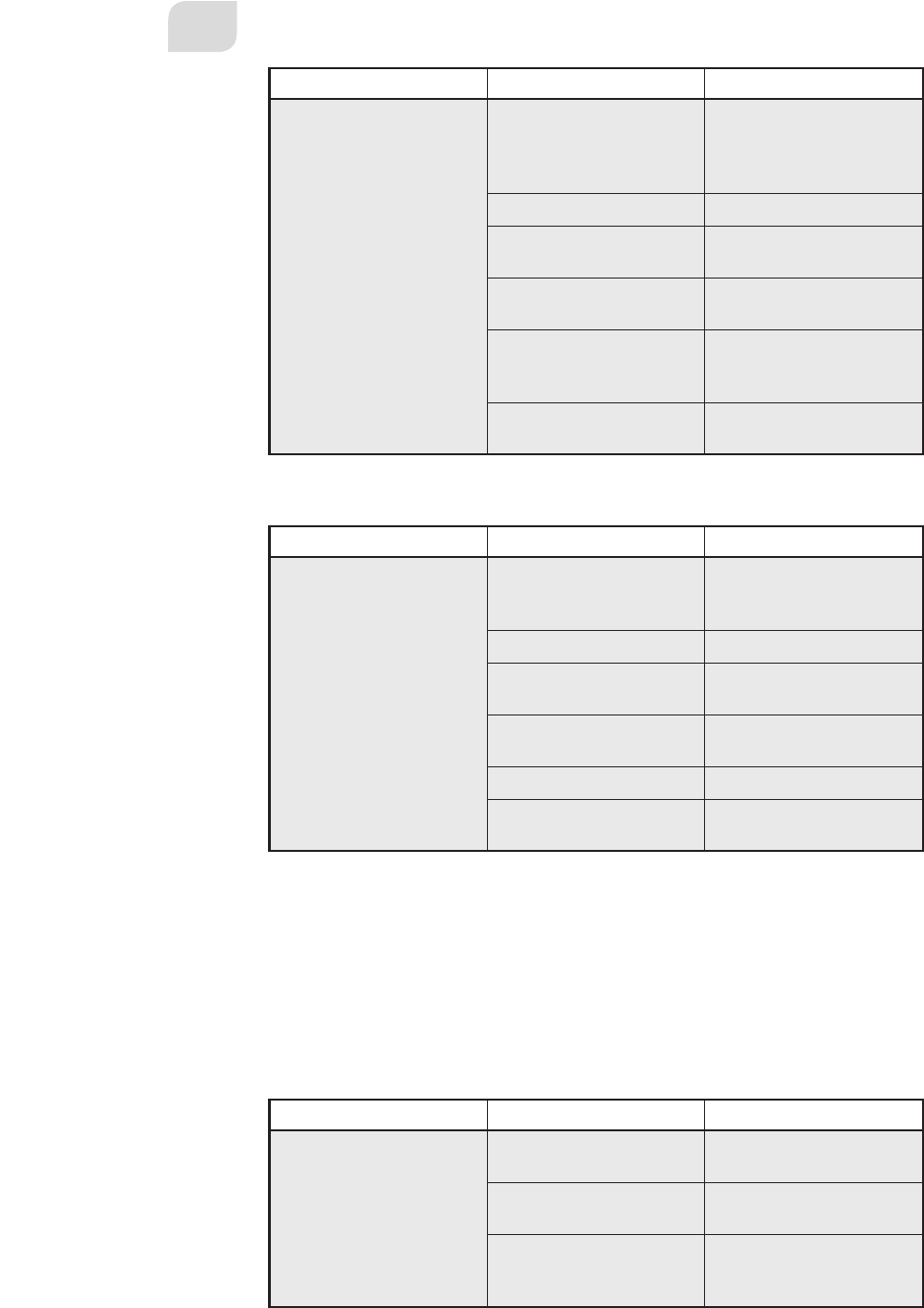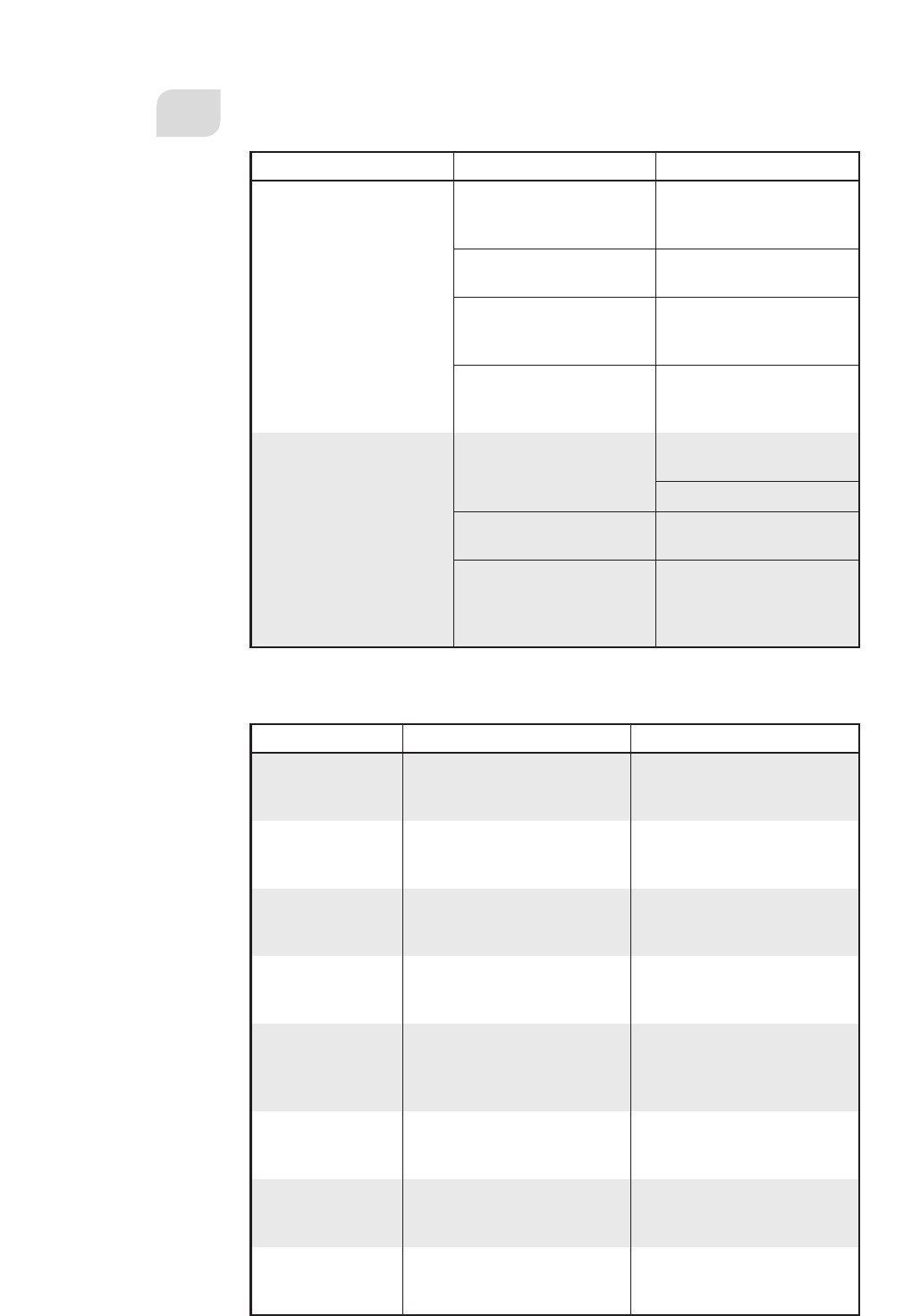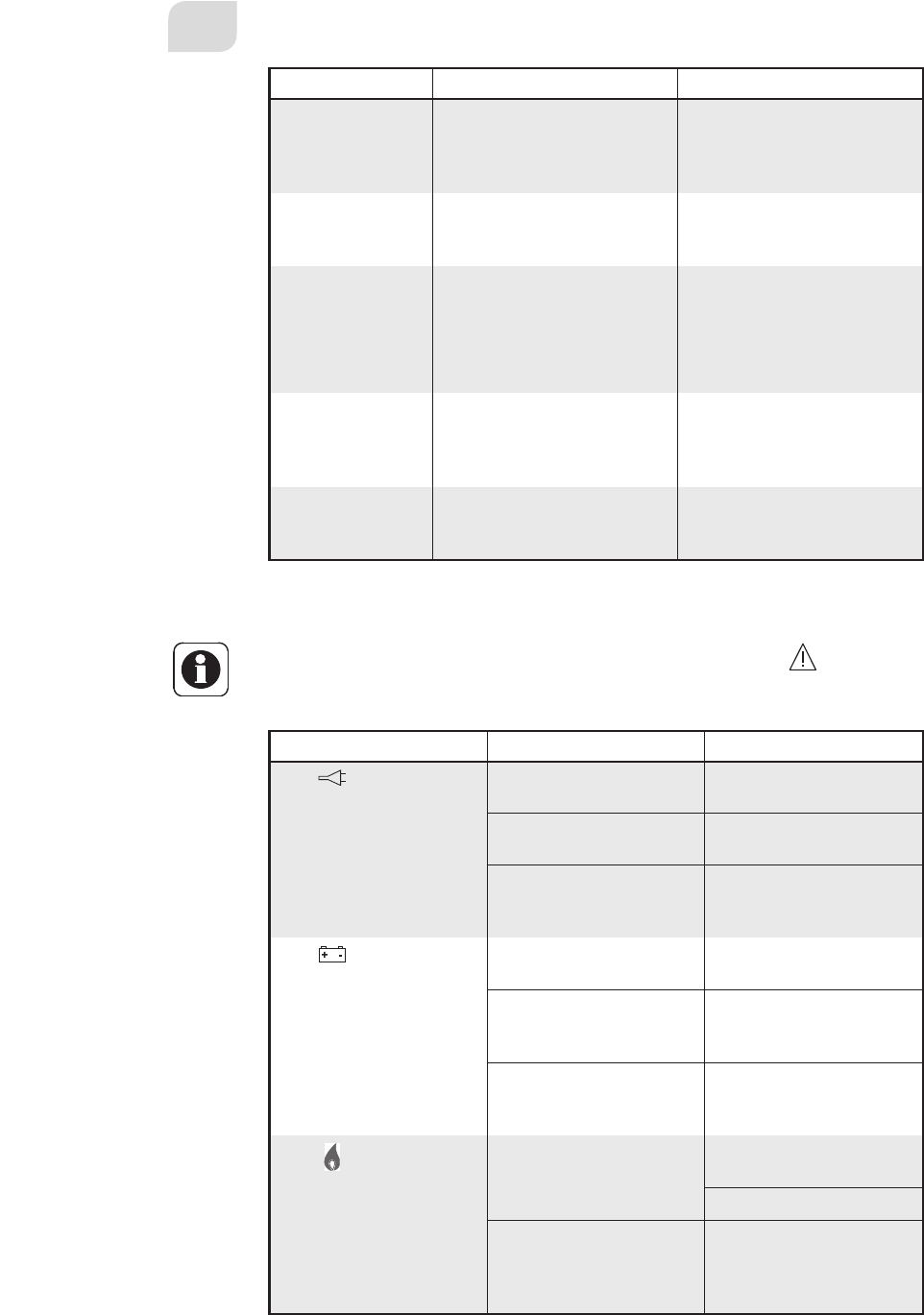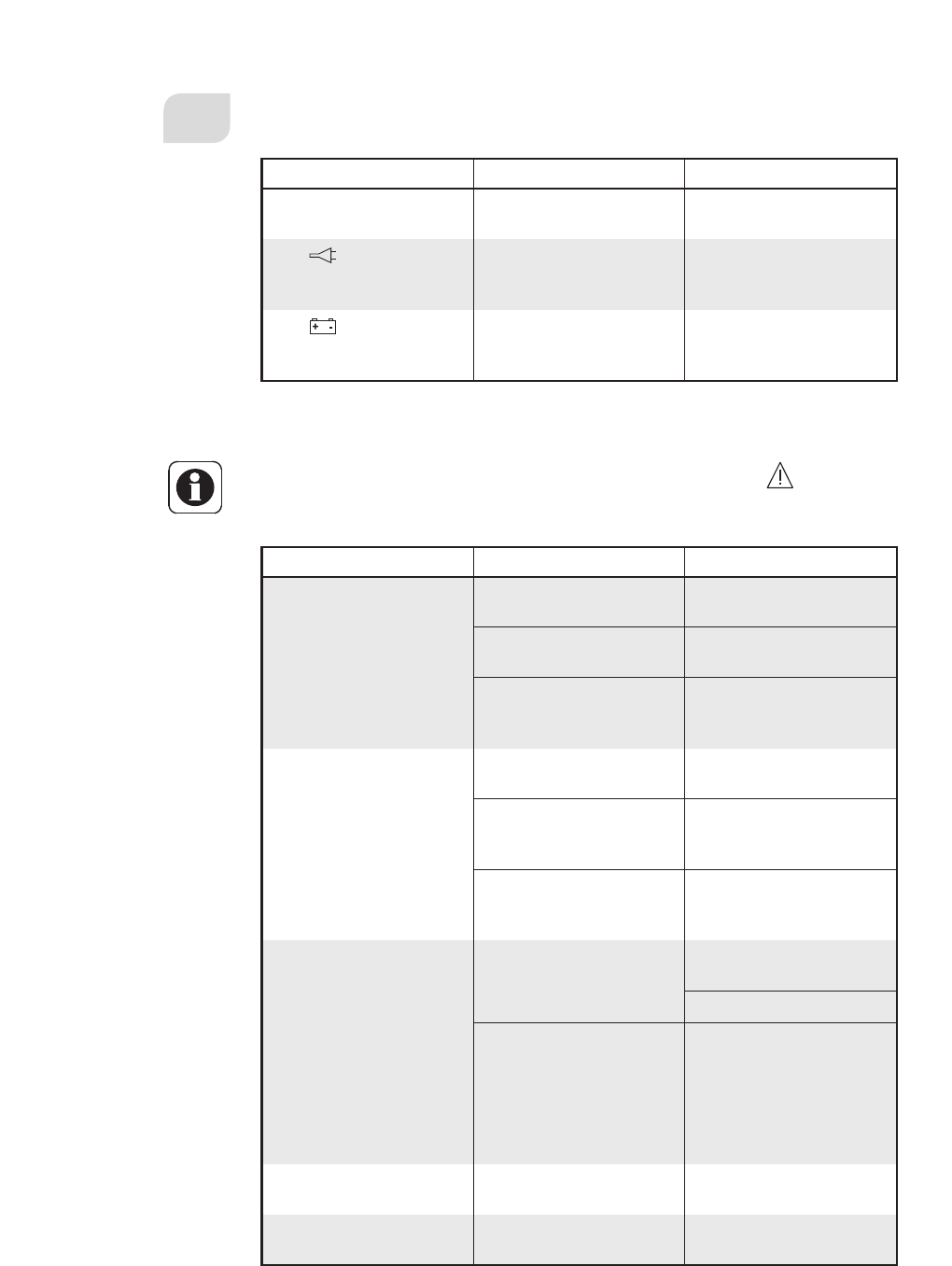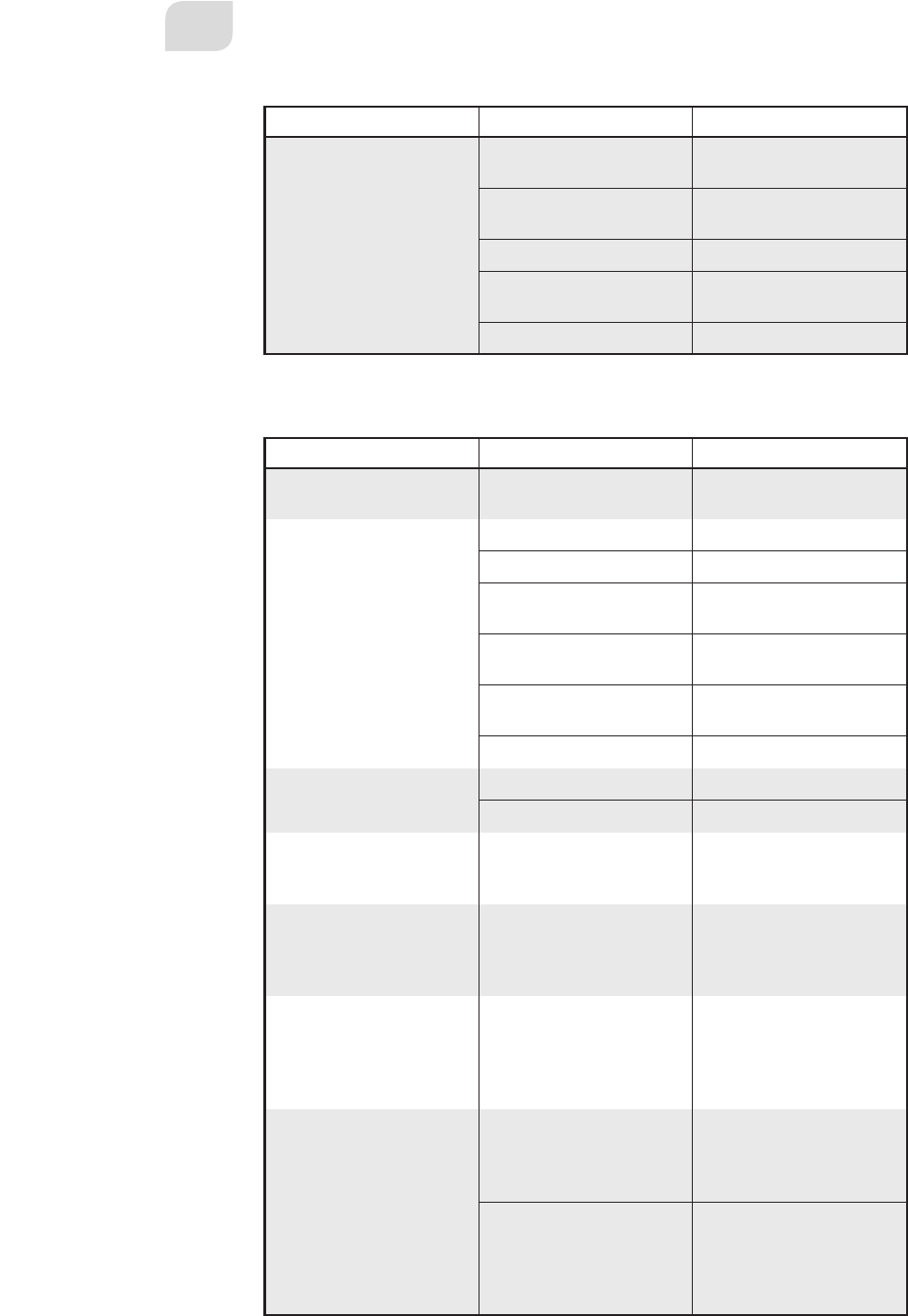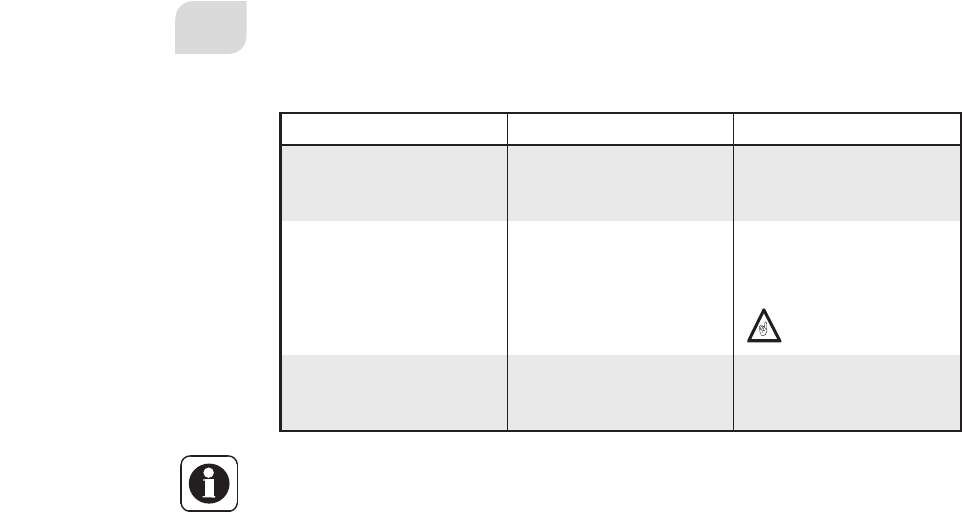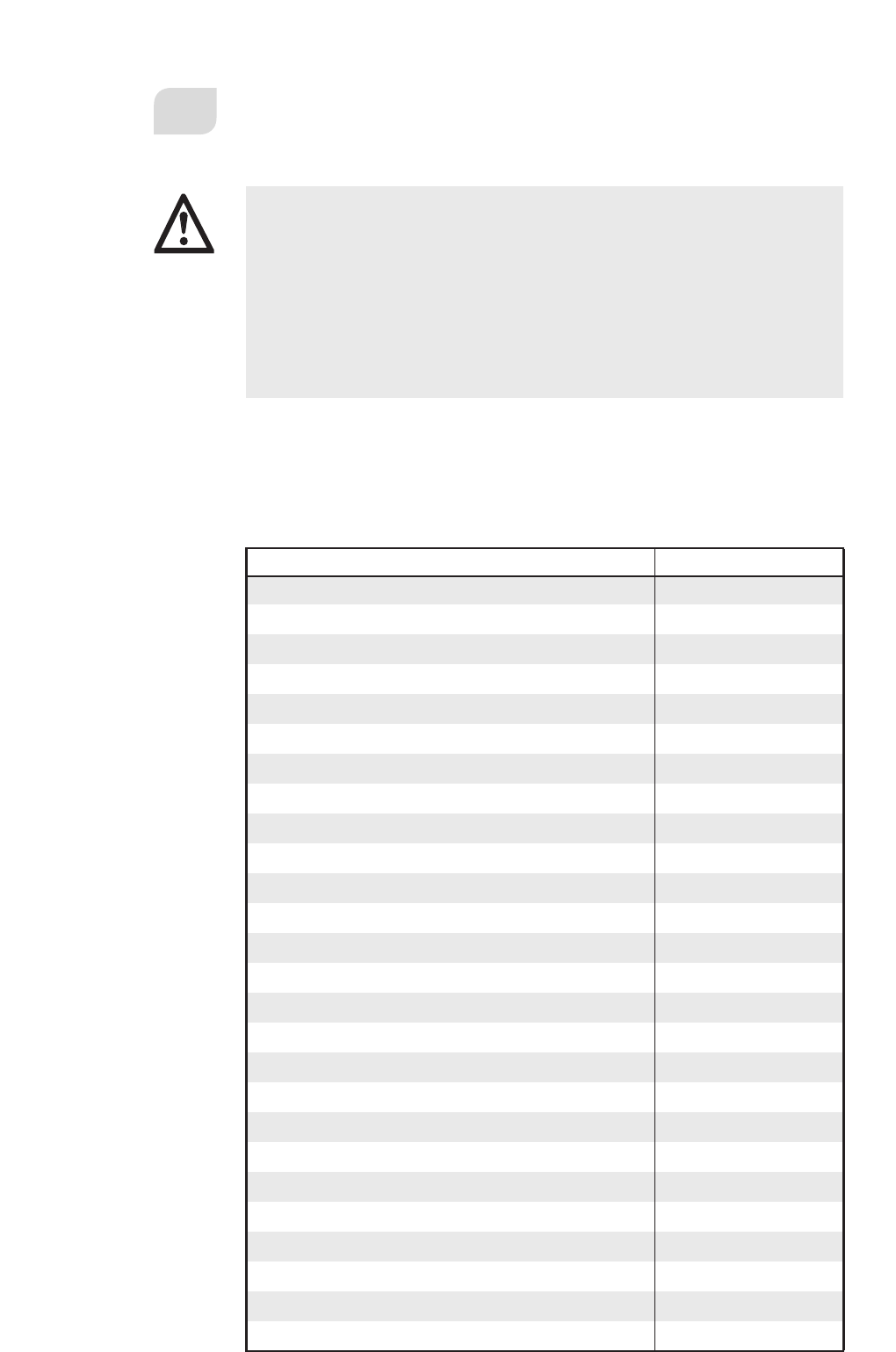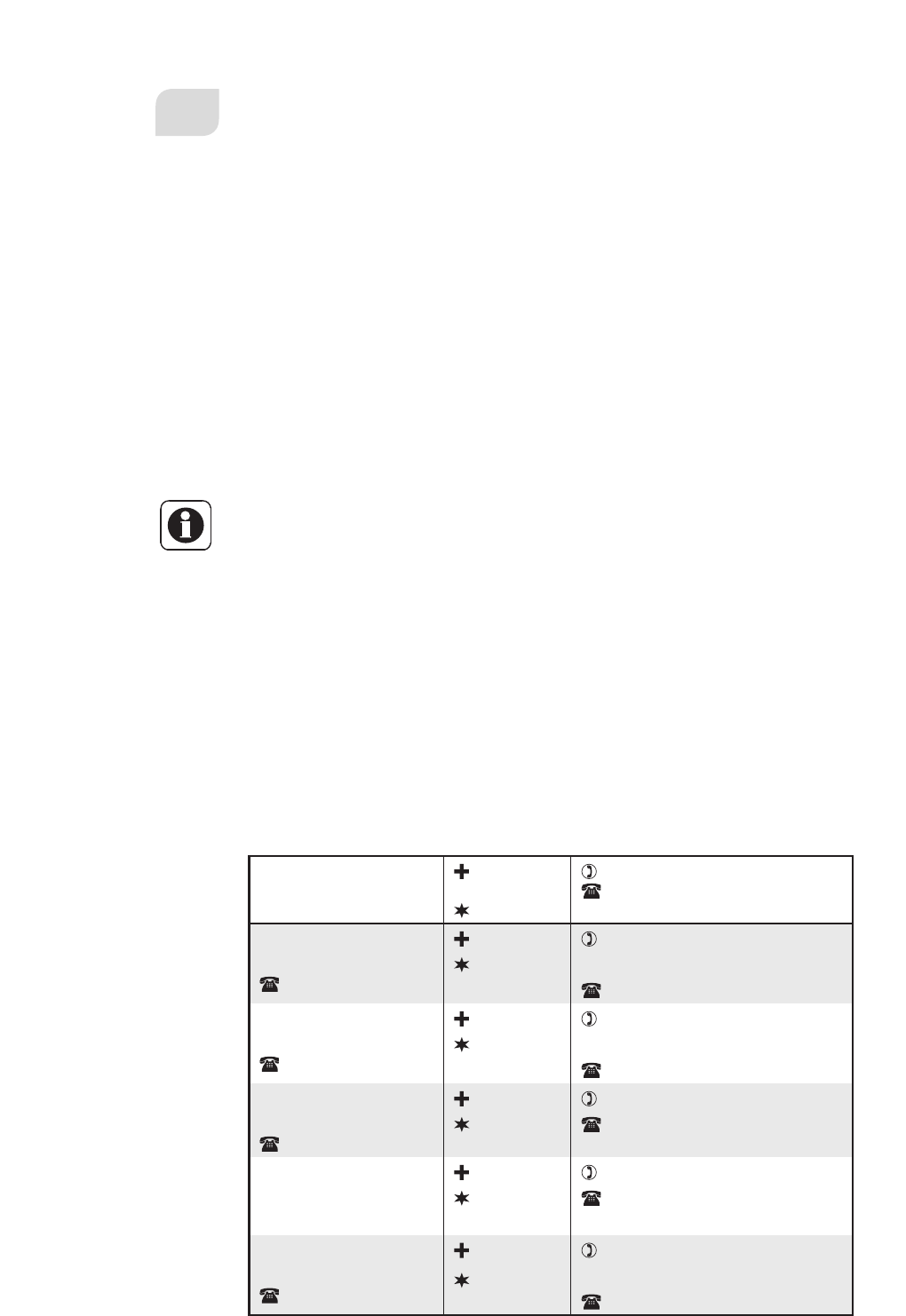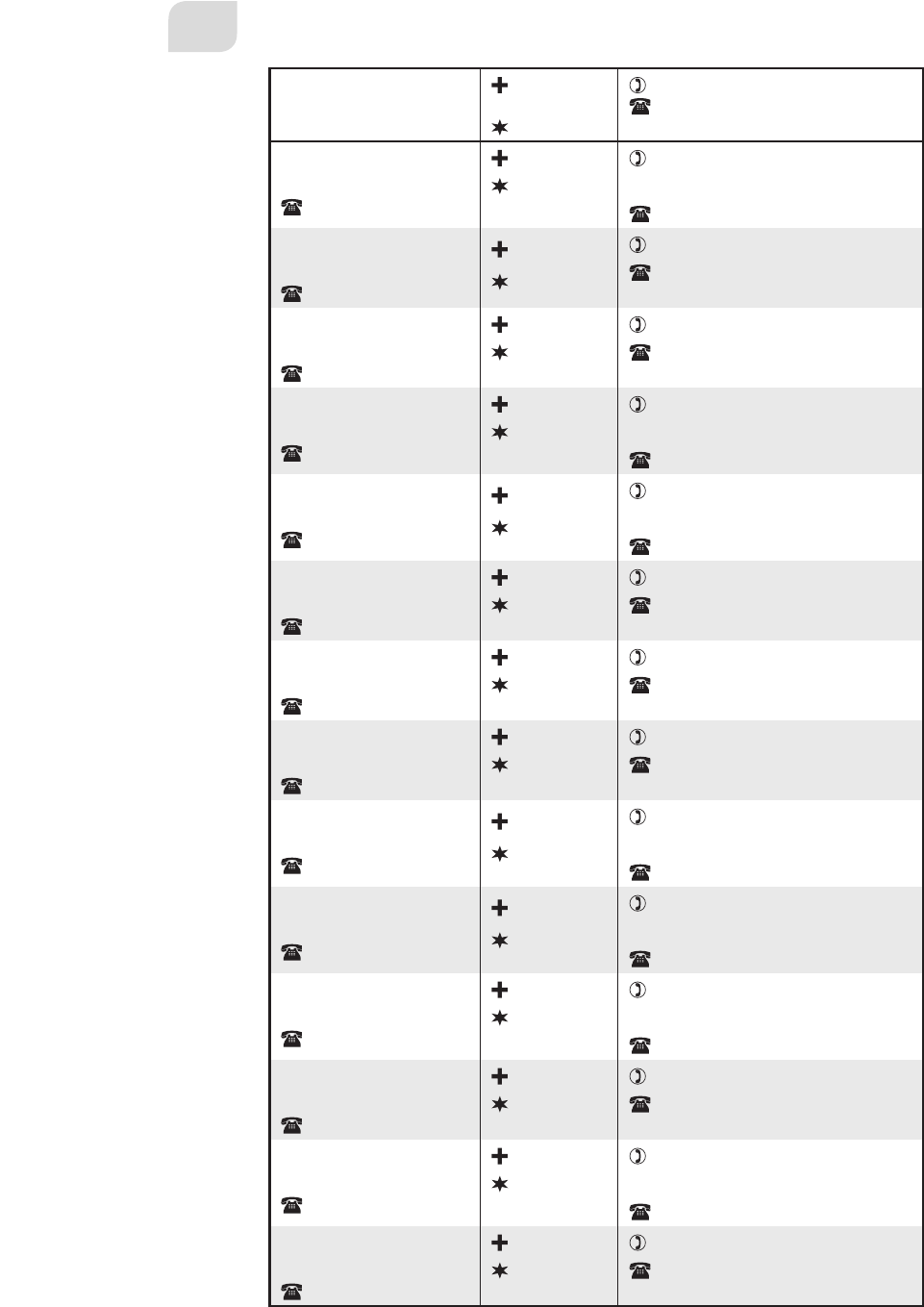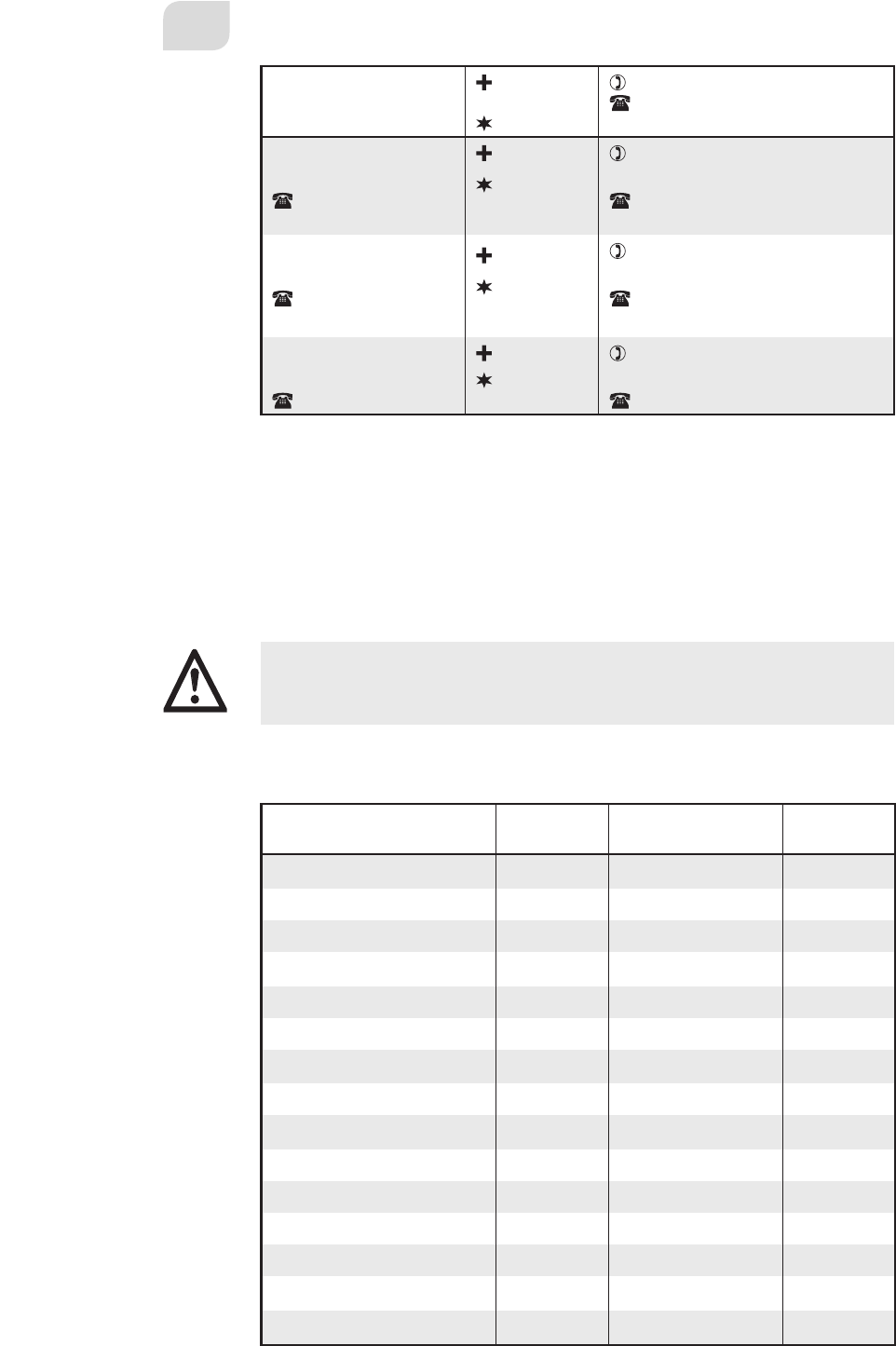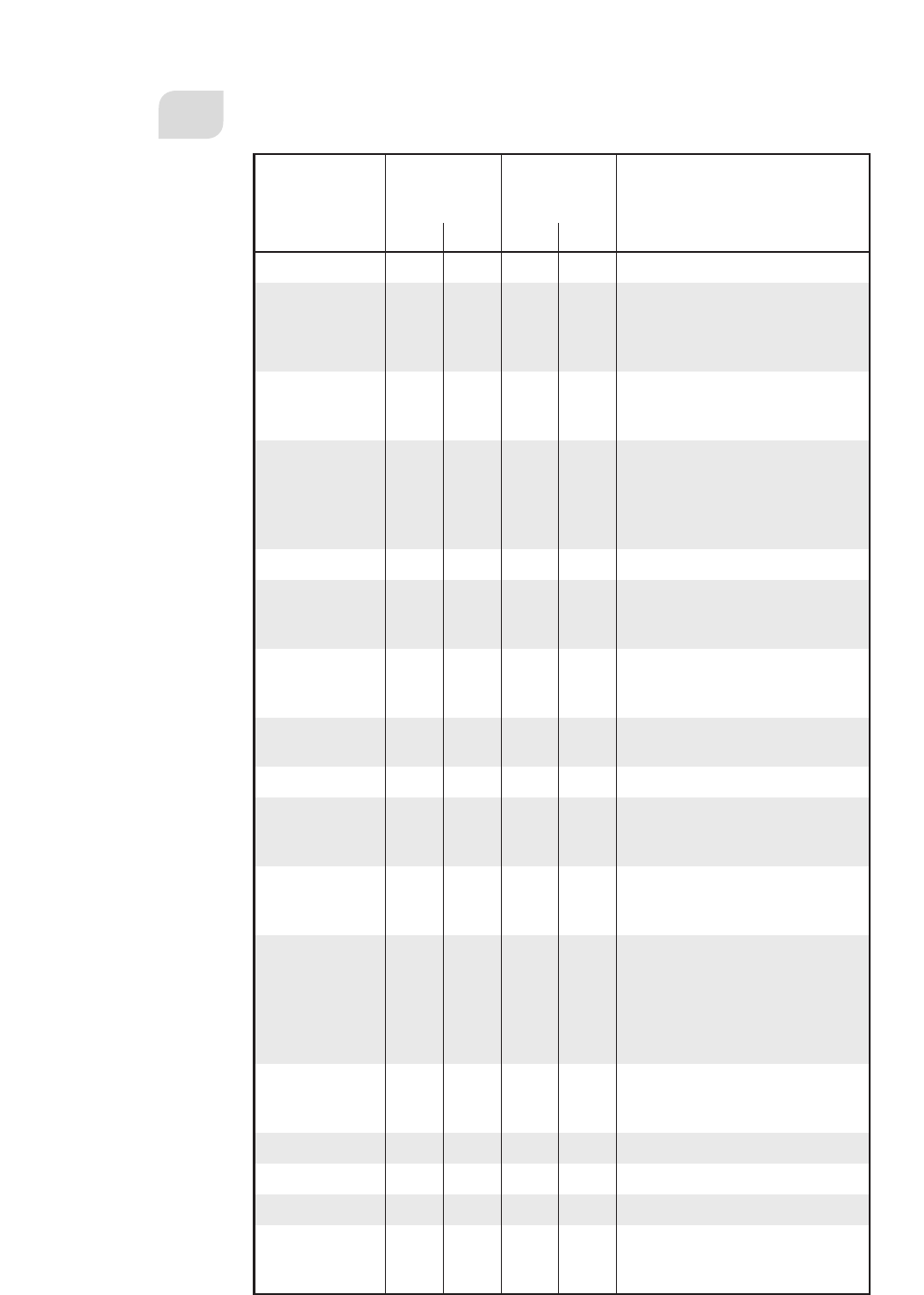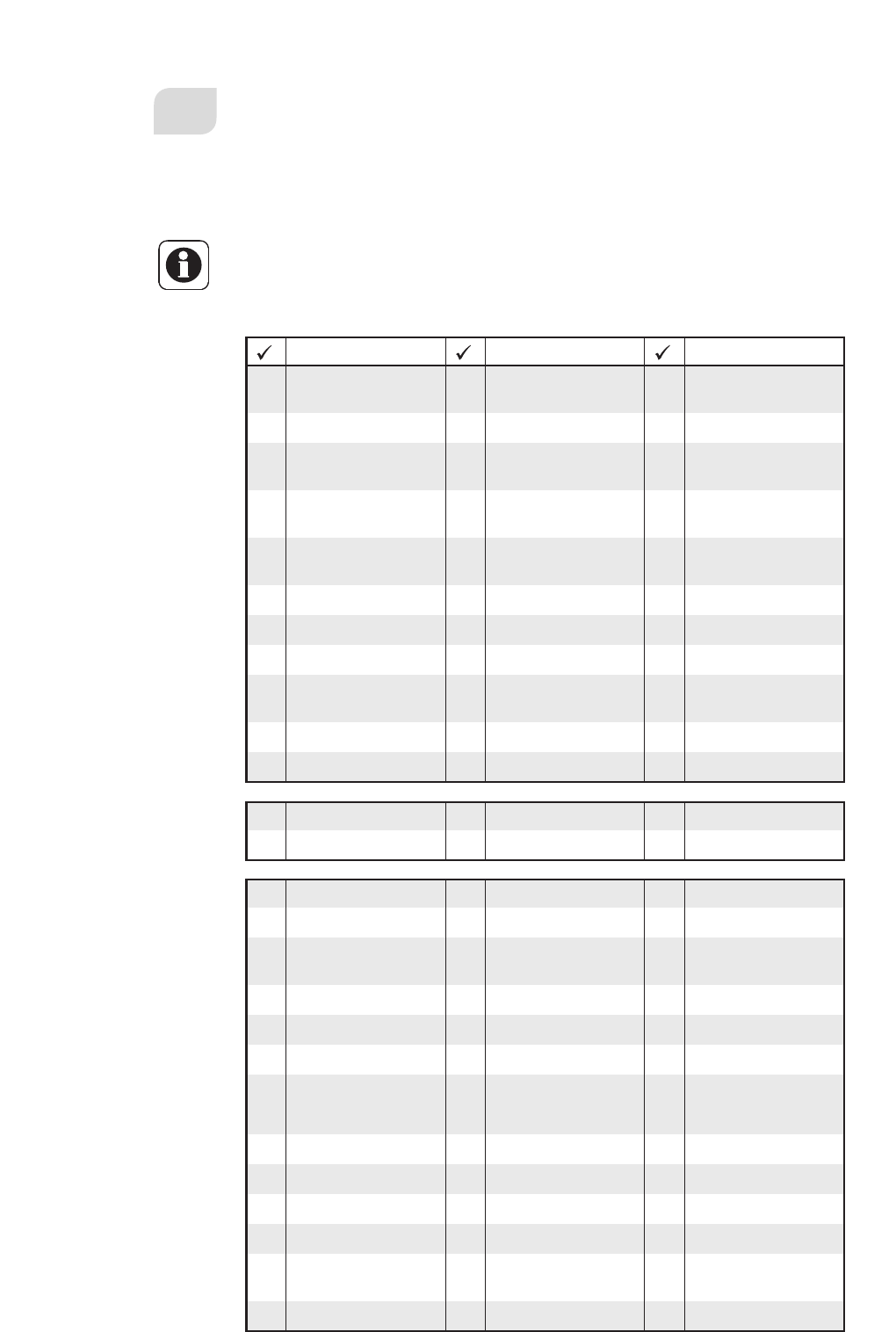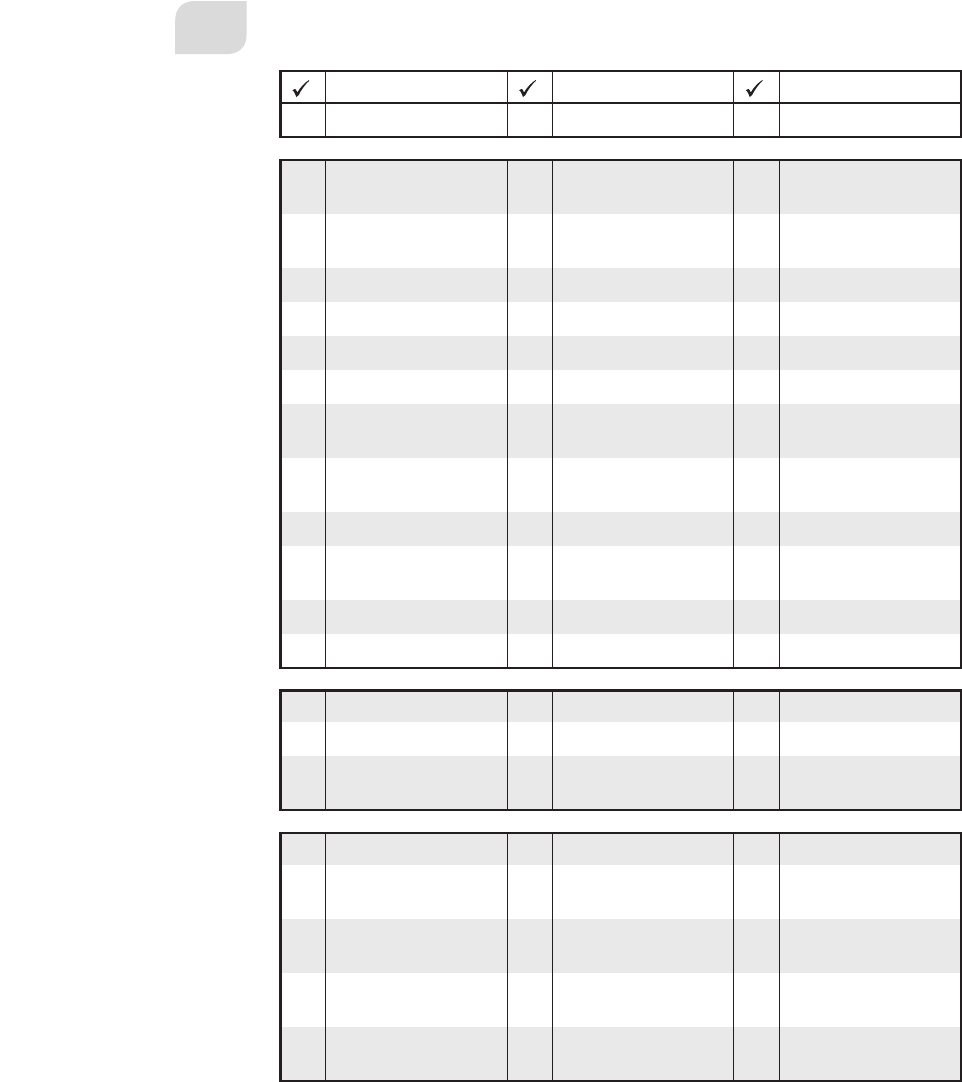Contents
1 Guarantee. . . . . . . . . . . . . . . . . . . . . . 7
1.1 Guarantee conditions. . . . . . . . . . . . . . . . . . . . . 7
1.2 Inspection records . . . . . . . . . . . . . . . . . . . . . . . . 8
1.3 Inspection plan for annual inspection . . . . 11
1.4 Inspection plan for leak test. . . . . . . . . . . . . . 12
2 Introduction. . . . . . . . . . . . . . . . . . . 13
2.1 General . . . . . . . . . . . . . . . . . . . . . . . . . . . . . . . . . 14
2.2 Environmental tips . . . . . . . . . . . . . . . . . . . . . . 14
3 Safety. . . . . . . . . . . . . . . . . . . . . . . . . 17
3.1 Fire prevention . . . . . . . . . . . . . . . . . . . . . . . . . . 17
3.1.1 Avoidance of fire risks. . . . . . . . . . . . . . . . . . . . 17
3.1.2 Fire-fighting . . . . . . . . . . . . . . . . . . . . . . . . . . . . . 17
3.1.3 In case of fire . . . . . . . . . . . . . . . . . . . . . . . . . . . . 17
3.2 General . . . . . . . . . . . . . . . . . . . . . . . . . . . . . . . . . 18
3.3 Road safety. . . . . . . . . . . . . . . . . . . . . . . . . . . . . . 18
3.4 Towing. . . . . . . . . . . . . . . . . . . . . . . . . . . . . . . . . . 19
3.5 Gas system . . . . . . . . . . . . . . . . . . . . . . . . . . . . . . 20
3.5.1 General information . . . . . . . . . . . . . . . . . . . . . 20
3.5.2 Gas bottles . . . . . . . . . . . . . . . . . . . . . . . . . . . . . . 21
3.6 Electrical system . . . . . . . . . . . . . . . . . . . . . . . . . 21
3.7 Water system. . . . . . . . . . . . . . . . . . . . . . . . . . . . 22
4 Before the journey . . . . . . . . . . . . . 23
4.1 Start-up . . . . . . . . . . . . . . . . . . . . . . . . . . . . . . . . . 23
4.2 Registration . . . . . . . . . . . . . . . . . . . . . . . . . . . . . 23
4.3 Connecting. . . . . . . . . . . . . . . . . . . . . . . . . . . . . . 24
4.4 Tow couplings. . . . . . . . . . . . . . . . . . . . . . . . . . . 25
4.4.1 AKS 1300 stabiliser. . . . . . . . . . . . . . . . . . . . . . . 25
4.4.2 AKS 3004 stabiliser. . . . . . . . . . . . . . . . . . . . . . . 25
4.5 Detaching . . . . . . . . . . . . . . . . . . . . . . . . . . . . . . . 26
4.6 Payload . . . . . . . . . . . . . . . . . . . . . . . . . . . . . . . . . 26
4.6.1 Terms . . . . . . . . . . . . . . . . . . . . . . . . . . . . . . . . . . . 27
4.6.2 Calculating the payload. . . . . . . . . . . . . . . . . . 29
4.6.3 Loading the caravan correctly. . . . . . . . . . . . 29
4.6.4 Caravan load, nose weight and axle load . 30
4.6.5 Roof loads. . . . . . . . . . . . . . . . . . . . . . . . . . . . . . . 32
4.7 PVC floor covering . . . . . . . . . . . . . . . . . . . . . . . 32
4.8 Television . . . . . . . . . . . . . . . . . . . . . . . . . . . . . . . 32
4.9 Road safety. . . . . . . . . . . . . . . . . . . . . . . . . . . . . . 34
5 During the journey . . . . . . . . . . . . 37
5.1 Driving with the caravan . . . . . . . . . . . . . . . . . 37
5.2 Brakes. . . . . . . . . . . . . . . . . . . . . . . . . . . . . . . . . . . 38
5.3 Driving in reverse. . . . . . . . . . . . . . . . . . . . . . . . 38
6 Pitching the caravan . . . . . . . . . . . 41
6.1 Handbrake . . . . . . . . . . . . . . . . . . . . . . . . . . . . . . 41
6.2 Wheel chocks. . . . . . . . . . . . . . . . . . . . . . . . . . . . 42
6.3 Corner steadies . . . . . . . . . . . . . . . . . . . . . . . . . . 42
6.4 Entrance step (free-standing) . . . . . . . . . . . . 43
6.5 Waste water tank, mobile . . . . . . . . . . . . . . . . 44
6.6 230 V connection . . . . . . . . . . . . . . . . . . . . . . . . 44
6.7 Refrigerator . . . . . . . . . . . . . . . . . . . . . . . . . . . . . 44
7 Living . . . . . . . . . . . . . . . . . . . . . . . . .45
7.1 Doors. . . . . . . . . . . . . . . . . . . . . . . . . . . . . . . . . . . 45
7.1.1 Conversion door, outside (handle) . . . . . . . 45
7.1.2 Conversion door, outside (hinged handle)46
7.1.3 Conversion door, inside . . . . . . . . . . . . . . . . . 46
7.1.4 Conversion door, split . . . . . . . . . . . . . . . . . . . 47
7.1.5 Insect screen on the conversion door,
extendable . . . . . . . . . . . . . . . . . . . . . . . . . . . . . 47
7.1.6 Blind on the conversion door . . . . . . . . . . . . 48
7.2 External flaps . . . . . . . . . . . . . . . . . . . . . . . . . . . 48
7.2.1 Flap lock rear flap, outside. . . . . . . . . . . . . . . 48
7.2.2 Flap lock rear flap, inside . . . . . . . . . . . . . . . . 49
7.2.3 Flap lock with recessed handle . . . . . . . . . . 49
7.2.4 Flap lock, elliptical . . . . . . . . . . . . . . . . . . . . . . 50
7.2.5 Flap lock, rectangular . . . . . . . . . . . . . . . . . . . 50
7.2.6 Flap for toilet cassette . . . . . . . . . . . . . . . . . . . 51
7.2.7 External flap 230 V connection . . . . . . . . . . 51
7.3 Heating. . . . . . . . . . . . . . . . . . . . . . . . . . . . . . . . . 52
7.4 Ventilation. . . . . . . . . . . . . . . . . . . . . . . . . . . . . . 52
7.5 Windows . . . . . . . . . . . . . . . . . . . . . . . . . . . . . . . 52
7.5.1 Hinged window with rotary hinges . . . . . . 53
7.5.2 Hinged window with automatic hinges . . 54
7.5.3 Blind and roller insect screen . . . . . . . . . . . . 56
7.5.4 Bug window blind . . . . . . . . . . . . . . . . . . . . . . 57
7.6 Skylights. . . . . . . . . . . . . . . . . . . . . . . . . . . . . . . . 57
7.6.1 Skylight with snap latch (Variant 1) . . . . . . 58
7.6.2 Skylight with snap latch (Variant 2) . . . . . . 59
7.6.3 Heki skylight (mini and midi) . . . . . . . . . . . . 60
7.6.4 Heki skylight . . . . . . . . . . . . . . . . . . . . . . . . . . . . 61
7.7 Lifting roof. . . . . . . . . . . . . . . . . . . . . . . . . . . . . . 63
7.8 Tables . . . . . . . . . . . . . . . . . . . . . . . . . . . . . . . . . . 63
7.8.1 Suspension table with fold-out leg. . . . . . . 63
7.8.2 Swivel table. . . . . . . . . . . . . . . . . . . . . . . . . . . . . 64
7.8.3 Swivel table of the rear seating group. . . . 65
7.8.4 Lift-off table for the round seating group 65
7.9 Television. . . . . . . . . . . . . . . . . . . . . . . . . . . . . . . 66
7.10 Lamps . . . . . . . . . . . . . . . . . . . . . . . . . . . . . . . . . . 67
7.10.1 Spotlight (moveable). . . . . . . . . . . . . . . . . . . . 67
7.10.2 Halogen spotlight. . . . . . . . . . . . . . . . . . . . . . . 68
7.11 Extending the central seating group . . . . . 68
7.12 Beds . . . . . . . . . . . . . . . . . . . . . . . . . . . . . . . . . . . . 69
7.12.1 Bunk bed . . . . . . . . . . . . . . . . . . . . . . . . . . . . . . . 69
7.12.2 Bunk bed, folding . . . . . . . . . . . . . . . . . . . . . . . 69
7.12.3 Fixed bed (gas pressure spring). . . . . . . . . . 70
7.12.4 Bed in sleeper roof . . . . . . . . . . . . . . . . . . . . . . 71
7.13 Converting seating groups for sleeping . . 72
7.13.1 Bench seating group and side seating group
72
7.13.2 Round seating group with round table. . . 73
7.13.3 Rear seating group . . . . . . . . . . . . . . . . . . . . . . 74
7.13.4 Widening the bed into a playing area . . . . 75
8 Gas system . . . . . . . . . . . . . . . . . . . .77
8.1 General . . . . . . . . . . . . . . . . . . . . . . . . . . . . . . . . . 77
8.2 Gas bottles. . . . . . . . . . . . . . . . . . . . . . . . . . . . . . 78
8.3 Gas consumption . . . . . . . . . . . . . . . . . . . . . . . 79
8.4 Changing gas bottles. . . . . . . . . . . . . . . . . . . . 79


















































































































































































